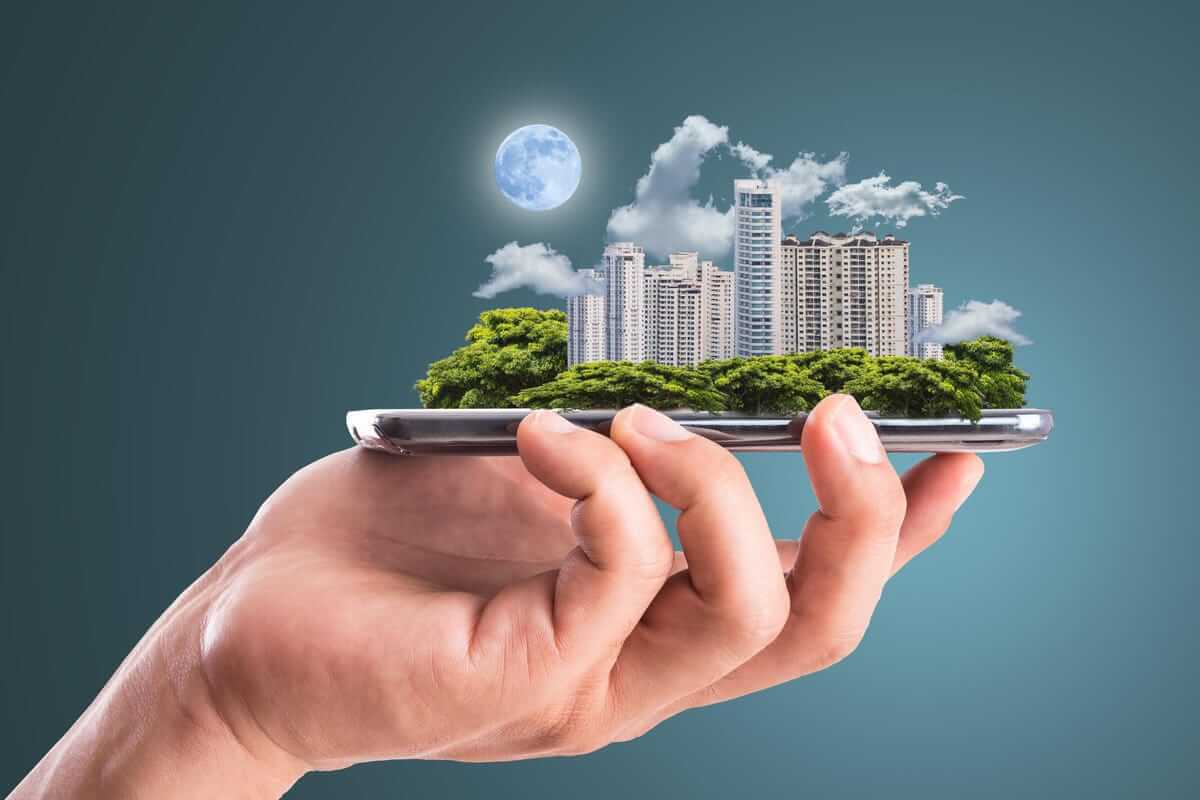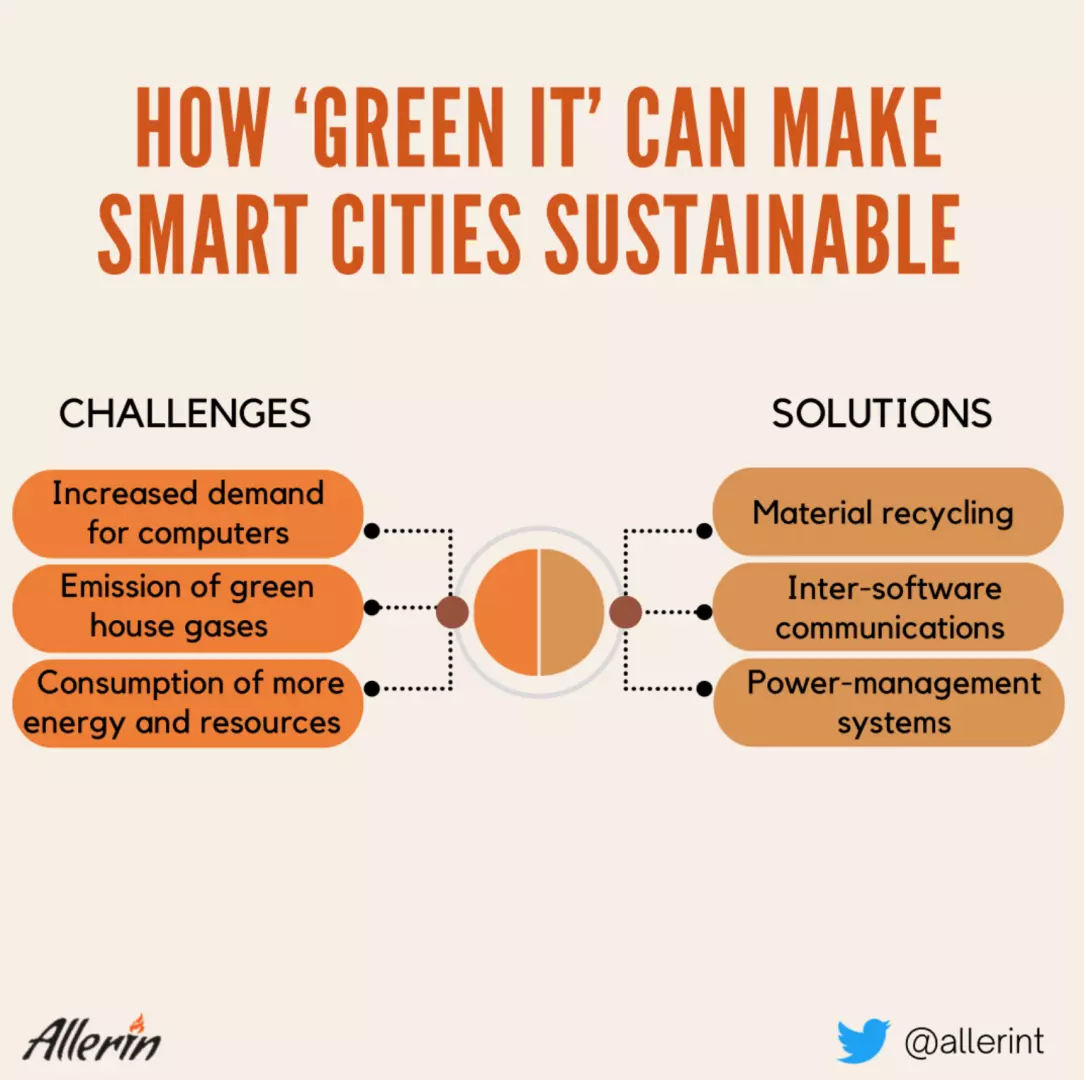Comments
- No comments found

Smart cities are embedding sustainability to manage resources efficiently.
Green IT can help governments to find smart solutions to make smart cities environmentally sustainable.
Cities provide people with opportunities to improve their quality of life. Hence, the population of cities is growing at an increasing rate. To meet the needs of the expanding population and to fulfill their lifestyle needs, the government is trying to make cities smarter by using technology. Smart cities have the potential to gather data from various information sources and use them to give solutions for managing assets and resources. With the increase in the use of IT products and applications, there is an increase in demand to manufacture them. Green IT, also known as green computing, makes IT products and IT applications in an environmentally friendly way. The concept of Green IT came into existence when the Energy Star program was launched by the U.S. Environmental Protection Agency in 1992. Energy star is used to promote and recognize energy efficiency and helps organizations to make decisions accordingly. The prime objective of green IT is to minimize the negative environmental effects of manufacturing, operating, and disposing of IT-related products and applications. The adoption of green IT can help address challenges to ensuring sustainability in smart cities.
Smart cities and sustainability are considered interconnected, as resources can be managed smartly with the help of new technologies. The development of smart cities necessitates the use of smart technologies. The use of smart technologies can be costly and consume more resources. Excessive consumption of resources may lead to the unsustainability of smart cities. It is said that 70% of the natural resources used in the entire life cycle of a computer are used during computer manufacturing. In today's world where the technology refresh cycle is rapid, computing devices become obsolete quite fast. And then, a person has to replace the old computer with a new one. Thus, there is an increased demand for computer devices which results in the consumption of more resources.

Even the use of software and networking services can impact the environment. Search results can cause the emission of carbon dioxide due to the energy required to power a computer and to send the request to servers around the world. Gartner says that 2% of the global carbon dioxide emissions are accounted for by global information and communication technology (ICT). Excess emission of carbon dioxide can ultimately lead to an increase in global warming. Data centers are always criticized for their demand and consumption of high energy. Smart cities will probably get the best solutions for administration based on gathering and analyzing data, making their large data centers. Hence, smart cities will need a compelling power management system.
Designing, manufacturing, using, and disposing of IT-related products and software in an environmentally efficient way is the basic principle of green IT. Whereas manufacturing IT products can be harmful to the environment, green IT tries to find a way to have minimal effect on the environment. Green IT can be used in many different ways. Computer virtualization is one of the concepts used in green IT. In computer virtualization, the system administrator can combine several systems to a virtual machine on one single and robust system. The use of computer virtualization can reduce power consumption by unplugging the original hardware.
Cathode ray tube (CRT) monitors use more power than liquid crystal display (LCD) monitors. LCD monitors also contain less amount of lead. Hence, the use of LCD monitors should be preferred over CRT monitors. Also, some new LCD monitors use light-emitting diodes (LEDs) to provide light for display instead of a fluorescent bulb. LED back-lights do not contain mercury, whereas fluorescent back-lights do contain a small amount of mercury. Exposure to mercury is toxic for human health, it can have medical effects on many body functions like cardiovascular, pulmonary, digestive, renal, and immune systems. Green IT also implements the use of technologies like teleconferencing and telepresence. The primary benefit of using teleconferencing and telepresence is the reduced emission of green-house gases related to traveling. Green IT can also be used to distribute the energy as per the need of the computer by using the process of undervolting, thereby reducing resources consumption. Undervolting is a process where the CPU can switch components like the monitor and hard drive after inactivity for a set period.
There is a need to use sustainable technology to create a sustainable smart city. The issue of sustainability raises the need for green IT. Hardware products and software applications that consume fewer resources can be created with the help of green IT. The challenge posed by the increasing demand for computer devices can be solved by the product longevity concept of green IT. For example, manufacturing a new computer will need far more resources than manufacturing a new RAM to install in an existing computer. Recycling computing equipment and not disposing of them will limit the production of harmful materials such as lead and mercury. Recycling will reduce the need for creating new devices and will further lead to reducing energy and resources consumption. The emission of CO2 can be reduced with the use of a decentralized system. A decentralized system is an inter-connected information system that can provide search results without sending the request to servers around the world.
Cloud computing can address the issues of energy and resource consumption. Large enterprises, as well as small businesses, can transfer their on-premise applications to cloud computing and reduce their energy consumption and carbon emissions by half.
The world is rapidly moving towards smart urbanization. People have achieved comfort with the help of IT and smart cities, but have added harmful gases that can increase global warming. There is a need to adapt existing and newly emerging technologies in a way that has a minimal impact on the environment. The goal must be to achieve balanced growth concerning both the social and environmental points of view. This goal can be achieved with the help of green IT. Initiatives are taken by universities to educate students, to build and maintain systems in such a way that it reduces harm to the environment. With more educated and trained students, more applications can be devised for using green IT in all areas of businesses.
Naveen is the Founder and CEO of Allerin, a software solutions provider that delivers innovative and agile solutions that enable to automate, inspire and impress. He is a seasoned professional with more than 20 years of experience, with extensive experience in customizing open source products for cost optimizations of large scale IT deployment. He is currently working on Internet of Things solutions with Big Data Analytics. Naveen completed his programming qualifications in various Indian institutes.
Leave your comments
Post comment as a guest